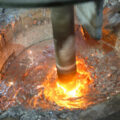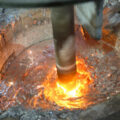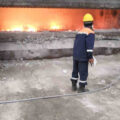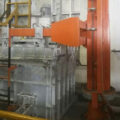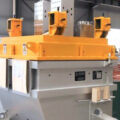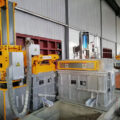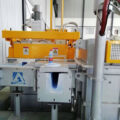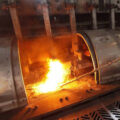Molten aluminum comes from the most common sources, such as primary metal, scrap and remelted ingots, and usually must be purified before being cast into ingots, plates, or bars. The molten aluminum purification with inert gas (ie nitrogen or argon) can remove dissolved hydrogen, inclusions and alkali metals.
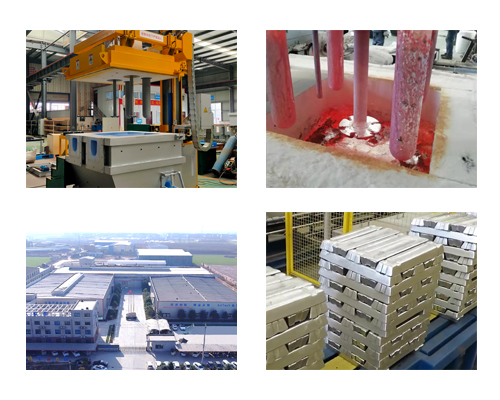
In some embodiments, a halogen gas, usually chlorine, is added, or the halogen gas can be used alone for this purpose of purification. This aluminum purification with inert gas treatment can remove dissolved alkali metals such as hydrogen, sodium, and lithium, as well as small solid particles such as alumina. The effectiveness of a given volume of gas in this process is increased by reducing the bubble size of the gas in the molten aluminum, thereby increasing the total gas-metal surface area. By dispersing the bubbles throughout the molten aluminum body to be processed, the effectiveness of the bubbles is also increased. A very effective method of making small bubbles and dispersing them is to use nozzles located in the molten aluminum body.
Generally, it is also necessary to increase the nozzle rotation speed to continue the required formation of small bubbles and the dispersion of small bubbles throughout the molten aluminum in the refining zone of the system. This increase in gas flow and nozzle speed is usually accompanied by an increase in turbulence on the surface of the molten aluminum. However, the maximum refining rate is limited by the maximum surface turbulence that can be tolerated therein.
For many reasons, excessive surface turbulence is undesirable in the degassing refining system. Therefore, the resulting increased metal surface area results in a higher reaction rate with any reactive gases that may be present. For example, oxygen in the air will react to form an aluminum oxide film, and water vapor in the air will react to form metal and hydrogen in the oxide film. In addition, when the solid particles are brought to the surface of the molten metal by the refined bubbles, surface turbulence may interfere with their separation from the bubbles and their incorporation into the floating scum layer formed on the molten aluminum body. Excessive turbulence may also cause the scum to redisperse into the molten aluminum.


